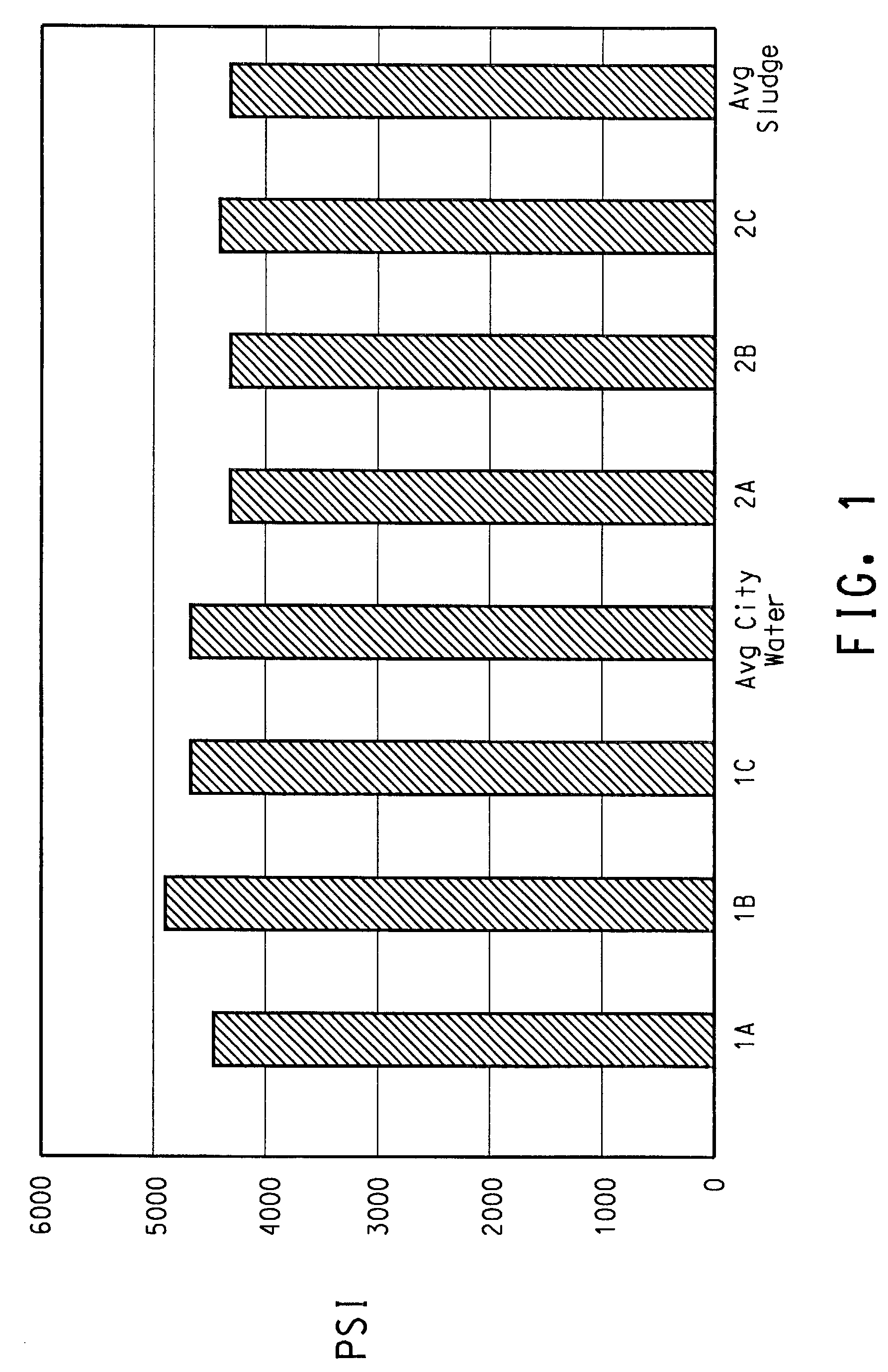Process for producing building materials from raw paint sludge
- Summary
- Abstract
- Description
- Claims
- Application Information
AI Technical Summary
Benefits of technology
Problems solved by technology
Method used
Image
Examples
example 1
Comparative Example
[0037]A full bag (32.3 kg) of Sakrete™ concrete mix was added to an electric cement mixer and dry blended for 1 minute. 15.000 kg of the blended concrete mix was weighed into a plastic pail, and 1.369 kg Troy Michigan city water, that had been tempered to 76° F., was weighed into a container. The pail of concrete mix (15.000 kg) was added to a clean dry mixer, the motor was turned on and approximately ¾ of the pre-measured city water was added and allowed to mix for 2 minutes. The remainder of the water was added and allowed to mix for 1 minute.
[0038]The mixed concrete was scooped from the mixer using a plastic cup and poured into a 4″×8″, cylindrical mold. The mold was filled ⅓ and then rodded and tapped on the side to release air. This was repeated at ⅔ full and full. A straight edge was used in a sawing action to produce a flat bottom. Three test cylinders (A, B, C) were produced in the same fashion in conformity with ASTM C31-84.
example 2
Paint Sludge Example
[0039]Concrete was made in an identical fashion to example 1 except that the Troy city water was replaced with paint booth sludge taken from a commercial automotive assembly plant.
Curing and Testing
[0040]All samples were cured and tested in the same fashion. Initial curing was at 68°–80° F. with mold lids securely closed followed by 28 days at 68°–80° F. with the lids removed. Following cure the concrete cylinders were tested according to ASTM C39-83B.
[0041]The test results are provided below.
[0042]
Tabulated Maximum Stress and Corresponding Strain by Specimen NameSpecimenMaximumCorrespondingMaximumCorrespondingNameForceDisplacementStressStrain1A−571540.09544,5480.06261B−61860−0.3804,9230.05311C−591710.06444,7090.0566Avg. City4,7270.0574Water2A−552930.08574,4000.05652B−55517−0.3874,4180.05372C−567230.07434,5140.0532Avg. Sludge4,4440.0545
[0043]The stress and strain comparisons of the city water bricks to the paint sludge bricks are plotted in FIGS. 1 and 2, respect...
PUM
| Property | Measurement | Unit |
|---|---|---|
| Percent by mass | aaaaa | aaaaa |
| Fraction | aaaaa | aaaaa |
| Weight | aaaaa | aaaaa |
Abstract
Description
Claims
Application Information
 Login to View More
Login to View More - R&D
- Intellectual Property
- Life Sciences
- Materials
- Tech Scout
- Unparalleled Data Quality
- Higher Quality Content
- 60% Fewer Hallucinations
Browse by: Latest US Patents, China's latest patents, Technical Efficacy Thesaurus, Application Domain, Technology Topic, Popular Technical Reports.
© 2025 PatSnap. All rights reserved.Legal|Privacy policy|Modern Slavery Act Transparency Statement|Sitemap|About US| Contact US: help@patsnap.com


